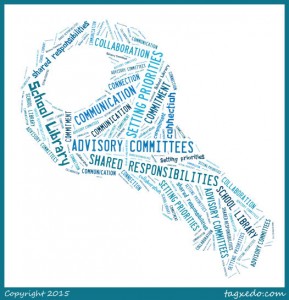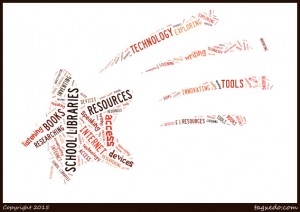 The mission of the Worlds of Words (WOW) is “to build bridges across global cultures through children’s and adolescent literature.” WOW hosts a physical library collection of international children’s and young adult literature on the campus of the University of Arizona in Tucson. In addition, WOW’s online presence includes book reviews (WOW Review), articles about integrating global literature into the classroom and library (WOW Stories), the WOW Currents blog, My Take/Your Take Book Dialogues, and an Author’s Corner.
The mission of the Worlds of Words (WOW) is “to build bridges across global cultures through children’s and adolescent literature.” WOW hosts a physical library collection of international children’s and young adult literature on the campus of the University of Arizona in Tucson. In addition, WOW’s online presence includes book reviews (WOW Review), articles about integrating global literature into the classroom and library (WOW Stories), the WOW Currents blog, My Take/Your Take Book Dialogues, and an Author’s Corner.
This month on the My Take/Your Take Book Dialogues, Deborah Dimmett from the University of Arizona and I are sharing global children’s literature picture books that portray or could inspire social activism. Our list of books is at the end of this post.
In their book For a Better World: Reading and Writing for Social Action (Heinemann, 2001), Randy and Katherine Bomer note that the ways an educator uses literature, designs activities, and prompts questions are part of a classroom (or library) discourse. When educators share their values and read texts that continually and consistently focus on values, students can naturally and openly discuss values as well.
Our first post this month is focused on the book In A Cloud of Dust (Fullerton/Deines). I wrote the introduction to the book and responded. Deb then wrote her response to the book. It is clear to me that Deborah and I will provide examples this month that demonstrate the nature of readers’ responses.
As Louise Rosenblatt’s transactional theory (1978) attests, each reader brings her own feelings, personality, and experiences to the reading of a text. Our responses to and interpretations of these texts will be different based on our background knowledge, values, and beliefs as well as the literal content of the text and the authors’ intentions.
Engaging in these types of discussions—whether in the face-to-face or online environment—can help educators prepare to share these texts with students. These five books provide jumping off places for students and teachers to engage in critical conversations. We invite you to check on our discussions and contribute your responses, interpretations, and comments this month.
References
Bomer, Randy and Katherine Bomer. For a Better World: Reading and Writing for Social Action. Portsmouth, NH: Heinemann, 2001. Print.
Rosenblatt, Louise M. The Reader, the Text, the Poem: The Transactional Theory of the Literary Work. Carbondale, IL: Southern Illinois University, 1978. Print.
Word Cloud created at Tagxedo.com
Books to be Discussed in December, 2015
1. In A Cloud of Dust by Alma Fullerton, Art by Brian Deines (Pajama Press, 2015)
2. The Soda Bottle School: A True Story of Recycling, Teamwork, and One Crazy Idea by Seño Laura Kutner and Suzanne Slade, illustrated by Aileen Darragh (Tilberry House 2015)
3. The Promise by Nicola Davies illustrated by Laura Carlin (Candlewick, 2013)
4. Twenty-Two Cents: Muhammed Yunus and the Village Bank by Paula Yoo, illustrated by Jamel Akib (Lee & Low, 2014)
5. My Heart Will Not Sit Down by Mara Rockliff (Knopf, 2012)





 The BACC bloggers are experimenting with exploring a shared topic each month. We will share various perspectives and points of view.
The BACC bloggers are experimenting with exploring a shared topic each month. We will share various perspectives and points of view.